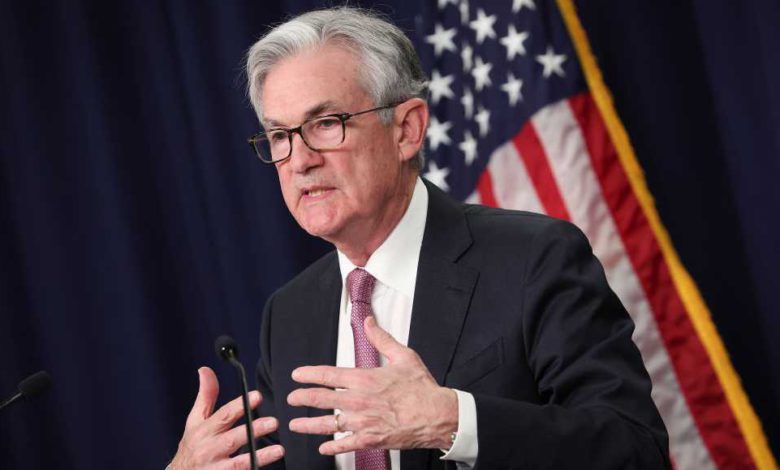

The Federal Reserve is going to raise interest rates again on Wednesday. But will it be another half-point hike or just a quarter-point increase? And what about the rest of the year?The Fed's actions beyond this week's meeting will depend primarily on whether inflation is truly slowing. Investors will get another clue when the January jobs report is released on Friday.Economists predict that 185,000 jobs were added last month, a slowdown from the gain of 223,000 jobs in December and 263,000 in November. A further deceleration in the labor market would likely please the Fed, as it would show that last year's rate hikes are successfully taking some air out of the economy.The Fed knows it's in a tough situation. Inflation pressures are partly fueled by wage gains for workers. In an environment where the unemployment rate is at a half-century low of 3.5%, employees have been able to command big increases in pay to keep up with rising prices of consumer goods and services.Along those lines, average hourly earnings, a measure of wages that is also part of the monthly jobs report, are expected to increase 4.3% year-over year. That's down from 4.6% in December and 5.1% in November.As wage growth cools, so do price increases. The Fed's favorite measure of inflation — the Personal Consumption Price Index or PCE — rose "just" 5% over the past 12 months through last December, compared to a 5.5% annual increase in November.That is still uncomfortably high, but the trend is moving in the right direction.The problem for the Fed, though, is that it may need to keep raising interest rates until there is further evidence that the labor market is cooling off enough to push the rate of inflation even lower.Recession or soft landing?Several other job market indicators continue to show that the U.S. economy is in no serious danger of a recession just yet. The number of people filing for weekly jobless claims dipped last week to 186,000, a nine-month low. Investors will get the latest weekly initial claims numbers on Thursday.The market will also be closely watching reports about private-sector job growth from payroll processor ADP and the Job Openings and Labor Turnover Survey (JOLTS) from the Department of Labor this week. The last JOLTS report showed that more jobs were available than expected in November.Still, some expect that wage growth should continue to fall, which should take pressure off the Fed somewhat."Wage growth has been on a slowing trajectory, and we suspect that softer wage growth will be a trend in 2023 as jobs available contract," said Tony Welch, chief investment officer at SignatureFD, a wealth management firm, in a report.Not everyone agrees with that assessment. Organized labor has been winning bigger pay increases lately in the transportation industry. And more workers at tech and retail giants have been unionizing as of late."Workers will be loath to relinquish the bargaining power they perceive to have gained over the past year," said Jason Vaillancourt, global macro strategist at Putnam, in a report.Vaillancourt also pointed out that many consumers are still flush with cash that they saved up during the early stages of the pandemic. That could mean that inflation isn't going away anytime soon.And even though the pace of jobs gains may be slowing, it's not as if economists are starting to predict monthly job losses like the U.S. has had in previous recessions."Combine a strong labor market with a still substantial reserve of excess savings, and you have all the components in place to keep the Fed up at night," Vaillancourt said.So as long as hopes for an economic "soft landing" persist, the Fed will have to keep worrying that inflation is too high. That increases the chances the Fed could go too far with rate hikes and ultimately lead to a recession.
The Federal Reserve is going to raise interest rates again on Wednesday. But will it be another half-point hike or just a quarter-point increase? And what about the rest of the year?
The Fed's actions beyond this week's meeting will depend primarily on whether inflation is truly slowing. Investors will get another clue when the January jobs report is released on Friday.
Economists predict that 185,000 jobs were added last month, a slowdown from the gain of 223,000 jobs in December and 263,000 in November. A further deceleration in the labor market would likely please the Fed, as it would show that last year's rate hikes are successfully taking some air out of the economy.
The Fed knows it's in a tough situation. Inflation pressures are partly fueled by wage gains for workers. In an environment where the unemployment rate is at a half-century low of 3.5%, employees have been able to command big increases in pay to keep up with rising prices of consumer goods and services.
Along those lines, average hourly earnings, a measure of wages that is also part of the monthly jobs report, are expected to increase 4.3% year-over year. That's down from 4.6% in December and 5.1% in November.
As wage growth cools, so do price increases. The Fed's favorite measure of inflation — the Personal Consumption Price Index or PCE — rose "just" 5% over the past 12 months through last December, compared to a 5.5% annual increase in November.
That is still uncomfortably high, but the trend is moving in the right direction.
The problem for the Fed, though, is that it may need to keep raising interest rates until there is further evidence that the labor market is cooling off enough to push the rate of inflation even lower.
Recession or soft landing?
Several other job market indicators continue to show that the U.S. economy is in no serious danger of a recession just yet. The number of people filing for weekly jobless claims dipped last week to 186,000, a nine-month low. Investors will get the latest weekly initial claims numbers on Thursday.
The market will also be closely watching reports about private-sector job growth from payroll processor ADP and the Job Openings and Labor Turnover Survey (JOLTS) from the Department of Labor this week. The last JOLTS report showed that more jobs were available than expected in November.
Still, some expect that wage growth should continue to fall, which should take pressure off the Fed somewhat.
"Wage growth has been on a slowing trajectory, and we suspect that softer wage growth will be a trend in 2023 as jobs available contract," said Tony Welch, chief investment officer at SignatureFD, a wealth management firm, in a report.
Not everyone agrees with that assessment. Organized labor has been winning bigger pay increases lately in the transportation industry. And more workers at tech and retail giants have been unionizing as of late.
"Workers will be loath to relinquish the bargaining power they perceive to have gained over the past year," said Jason Vaillancourt, global macro strategist at Putnam, in a report.
Vaillancourt also pointed out that many consumers are still flush with cash that they saved up during the early stages of the pandemic. That could mean that inflation isn't going away anytime soon.
And even though the pace of jobs gains may be slowing, it's not as if economists are starting to predict monthly job losses like the U.S. has had in previous recessions.
"Combine a strong labor market with a still substantial reserve of excess savings, and you have all the components in place to keep the Fed up at night," Vaillancourt said.
So as long as hopes for an economic "soft landing" persist, the Fed will have to keep worrying that inflation is too high. That increases the chances the Fed could go too far with rate hikes and ultimately lead to a recession.
Source link








